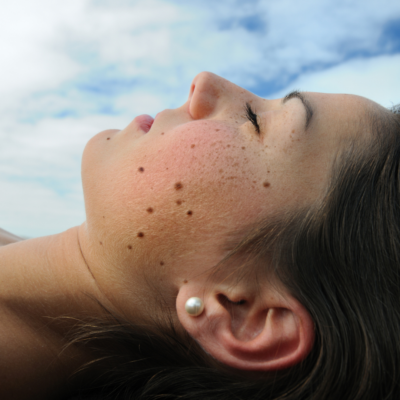
What to Know About Your Skin’s pH
This may come as a surprise, but your skin needs acid. But not all acids. Your skin’s preferred acid is it’s very own bio-organic acid. If it’s at an ideal level, it helps keep your skin healthy. And the rest of you too. That perfect Goldilocks level is your skin’s ideal pH. Protecting your skin’s pH level can help make your skin more resilient and supple.
pH is the unit of measure for how acidic or not something is. The right pH balance can be essential to prevent and treat skin conditions such as eczema, rosacea, psoriasis, and acne.
It’s all about that acid mantle
While the epidermis claims the title as your skin’s top layer, it is made up of five layers itself. The topmost of these is the stratum corneum. And covering that stratum corneum is a very fine, slightly acidic film called the acid mantle. The acid mantle acts as a barrier to bacteria, viruses, and other potential contaminants that might penetrate the skin.
This acid barrier also holds a microscopic trove of your skin’s very own diy ceramides, fatty acids, and cholesterol. To protect these precious compounds means keeping your acid mantle acidic. But not too acidic. It must be just right. Otherwise, skin can become susceptible to irritation. Your acid mantle needs to be at the proper pH.
Why is it called pH?
Without getting too high school chemistry about it, the p in pH stands for power and the H stands for hydrogen. Higher concentrations of specific hydrogen ions have a lower pH. That means more acidic. Fewer equals a higher pH known as alkaline. Alkalis can neutralize acids. For example, antacid tablets that neutralize stomach acids tend to be alkaline. Alkalis may be good for an upset tummy but possibly not good for your skin if they’re harsh cleansers and toners.
What’s the best pH for healthy skin?
The pH scale is 0 to 14, with 7 being neutral. Your skin’s pH is a measure of the acidity or alkalinity of your skin surface based on the moisture content of the stratum corneum. You would think that a higher number means more acid, but it doesn’t. It’s the opposite. The lower the number, the higher the acid concentration.
Standard pH Levels:
Acidic pH of 0-6
Neutral pH of 7
Alkaline pH of 8-14
Healthy skin tends toward an acidic pH of between 4.5 and 5.75. This range optimizes skin’s function as a barrier to germs and loss of hydration. This mildly acidic pH has also been found to help keep the skin’s protective microflora in place ready to work for you.
Skincare products and pH
Most skin care products stay within the healthy skin pH range of 4.5 to 5.75. Products formulated to promote cell turnover and exfoliation such as retinoic acid can be more acidic. If you want to optimize your skin’s pH health or manage chronic skin conditions such as dryness, rosacea, acne, psoriasis and eczema, it may be important to choose products that will help promote your skin’s pH balance.
All CSI skincare products are medical grade and carefully formulated to protect skin’s normal pH level. Careful research ensures that our moisturizers, cleansers, exfoliants and retinols help improve and maintain ideal pH balance.
pH ranges for skincare products:
Cleansers pH 4.5–7
Toners pH 5–7
Sunscreens pH 5–7.5
Moisturizers pH 5–7
Serums pH 4–6
Vitamin C (ascorbic acid) products pH 2.6–3.2 (3.5)
Retinol products pH 4–6.6
Be aware that everyday household products, including laundry detergents and household cleansers, can have a higher pH (alkaline) and upset your skin’s acidic pH balance. This could aggravate skin conditions such as atopic dermatitis and contact dermatitis. It could be helpful to make a list of all your personal care and cleaning products you use in your home to bring to your next appointment with your CSI dermatologist.



 / 291 Reviews
/ 291 Reviews